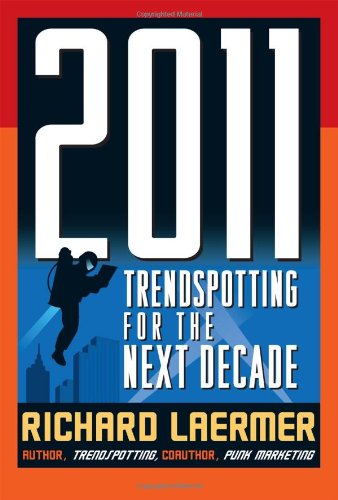
2011
Trendspotting for the Next Decade
کتاب های مرتبط
- اطلاعات
- نقد و بررسی
- دیدگاه کاربران
نقد و بررسی

March 3, 2008
In this companion to his 2002 trendSpotting, author and reluctant futurist Laermer presents "a business book for the day after tomorrow" that aims to avoid confusion, boredom and anxiety while maintaining a clear sense of what's knowable and what isn't. As such, the differences between fads and the genuine article, how they get that way and why ("More than ever, we will wait for something to send us home from our tedium") are examined without overshadowing the prognostication itself: "Mediocrity is ending in the next year or so." Unfortunately, there's more repetition and idle chatter than meaningful marketplace analysis; for a single serious consideration of, say, Sprint's 2007 decision to drop a thousand customers ("When your customers are horrible to you... People will see you're right" to drop them), there's a small handful of nearly-worthless entries ("Lying will become fashionable again," as will calling people out on them). Connectivity issues like the waning power of the press over the individual, the rise of "bacn" (like spam that "you kind of sort of maybe want") and the end of interweb anonymity dominate, buttressed by developments in travel, leisure time, the workplace and the media at large. If not always practical, Laermer's tenth book is personal, funny and perceptive, making for idiosyncratic and inspired browsing.

May 5, 2008
In this companion to his 2002 trendSpotting, author and reluctant futurist Laermer presents "a business book for the day after tomorrow" that aims to avoid confusion, boredom and anxiety while maintaining a clear sense of what's knowable and what isn't. As such, the differences between fads and the genuine article, how they get that way and why ("More than ever, we will wait for something to send us home from our tedium") are examined without overshadowing the prognostication itself: "Mediocrity is ending in the next year or so." Unfortunately, there's more repetition and idle chatter than meaningful marketplace analysis; for a single serious consideration of, say, Sprint's 2007 decision to drop a thousand customers ("When your customers are horrible to you... People will see you're right" to drop them), there's a small handful of nearly-worthless entries ("Lying will become fashionable again," as will calling people out on them). Connectivity issues like the waning power of the press over the individual, the rise of "bacn" (like spam that "you kind of sort of maybe want") and the end of interweb anonymity dominate, buttressed by developments in travel, leisure time, the workplace and the media at large. If not always practical, Laermer's tenth book is personal, funny and perceptive, making for idiosyncratic and inspired browsing.
Copyright 2008 Library Journal, LLC Used with permission.

























دیدگاه کاربران